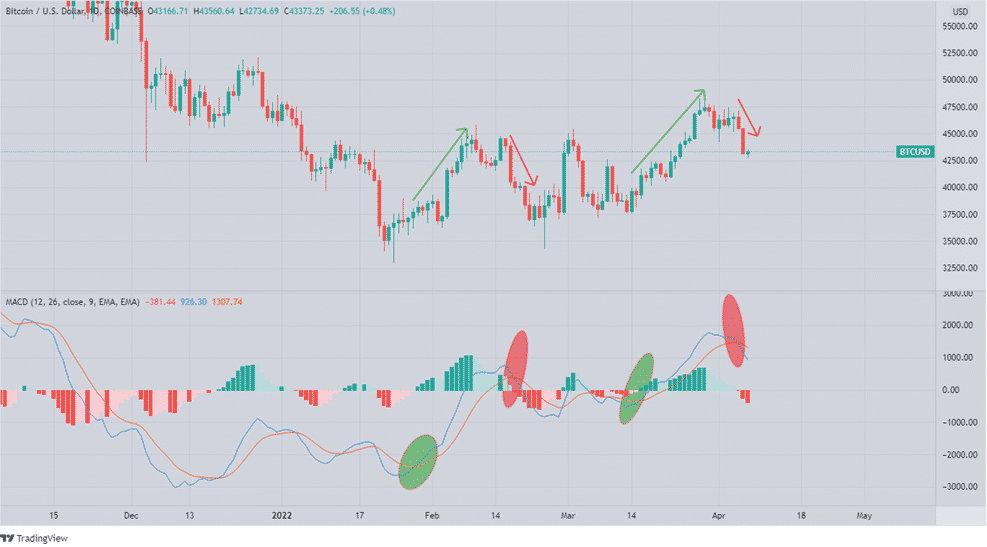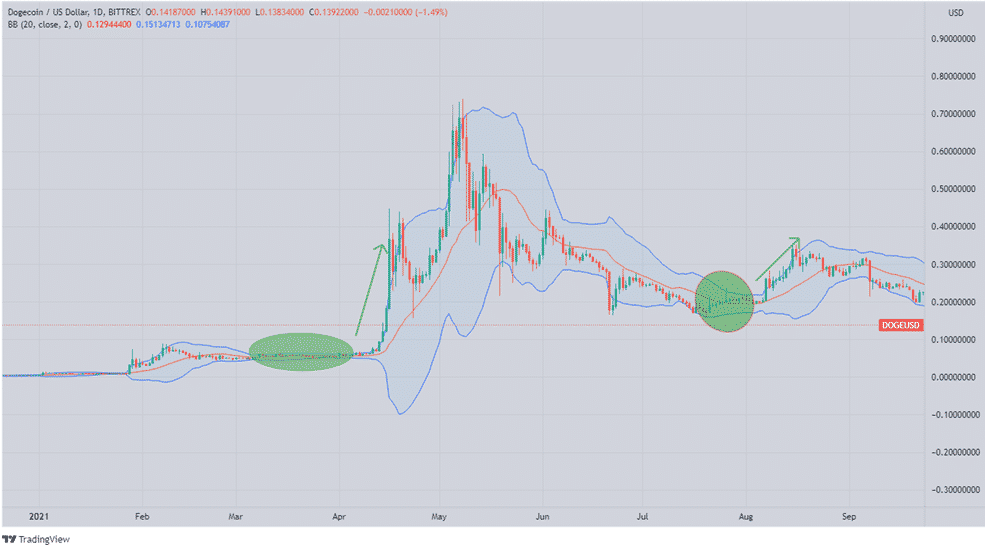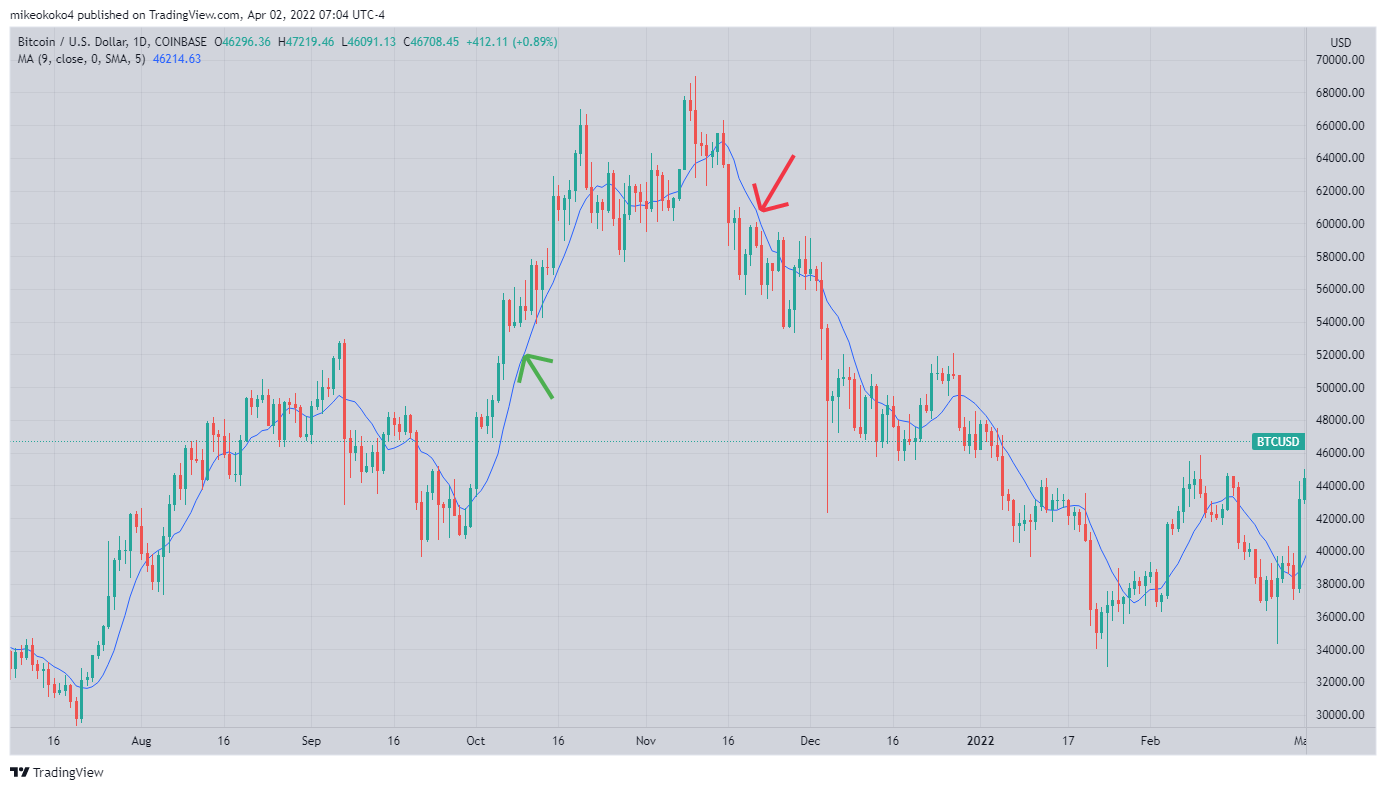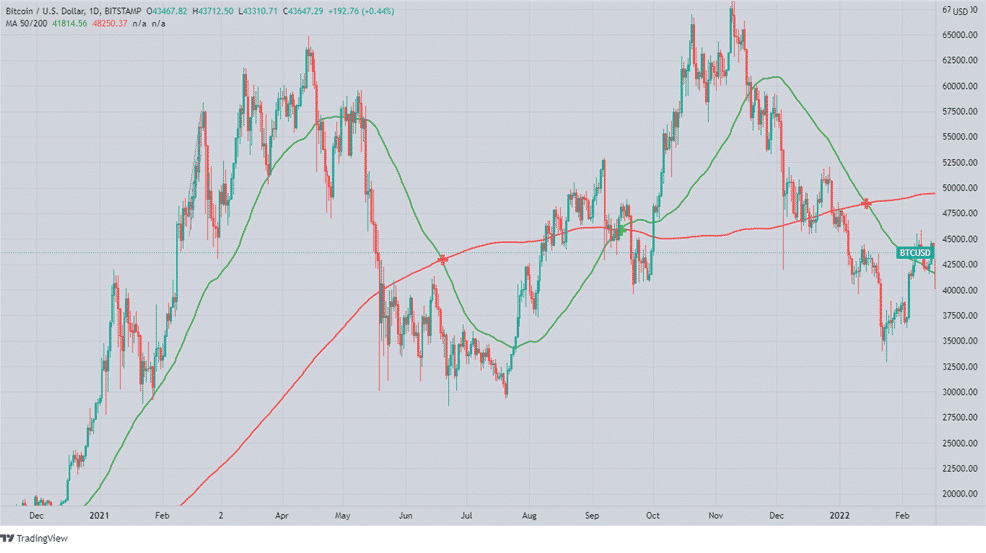Indicators are tools that traders use to analyze the market and make predictions concerning the future direction of a security’s price. A crypto indicator is built using mathematical algorithms and can help traders estimate digital currency prices more accurately. Traders can make judgments based on the information provided by the algorithms, which are then plotted on a graph and displayed alongside or overlaid on a trading chart.
The best crypto indicators for new traders
Moving Average Convergence/Divergence (MACD)
MACD is one of the most commonly used indicators for cryptocurrency trading. This is due to the fact that it’s simple to use and gives out reliable crypto trading signals. The MACD tracks price trends and tells us about the strength of the market momentum.
Short-term price momentum should follow long-term price momentum, but when it doesn’t, the MACD serves as a trend-following indicator to predict when the market’s direction will shift. The MACD has four components: the MACD line, the signal line, the zero line, and the histogram. Here’s how it works:
- Bullish market: the MACD crosses above the signal line, indicating an upward trend.
- Bearish market: When the signal line crosses over the MACD line, this is a bearish indicator.
Furthermore, when the MACD and signal lines both rise simultaneously, we get bullish signals indicating an increase in positive momentum. If the MACD line is falling, this is a bearish signal that indicates increasing negative momentum.
You may use the MACD indicator to identify areas of price divergence, which you can then employ as a signal for trading purposes. When the price makes a higher high while the MACD makes a lower high, or when the price makes a lower low while the MACD makes a higher low, we get a bearish divergence.

On the chart above, the areas in green highlight show bullish crossovers while those in red show bearish crossovers.
Bollinger Bands
Bollinger Bands (BBs) is a technical indicator that shows market volatility as well as overbought and oversold conditions.
The three lines of BBs are as follows:
- The middle band: This is a Simple Moving Average. Typically these bands employ 20-SMA as the default SMA.
- The upper band: This is often 2 standard deviations upwards from the middle band.
- The lower band: This is often 2 standard deviations downwards from the middle band.
The purpose of this indicator is to indicate how prices vary from an average value. Using Bollinger Bands, you can see the price action of a security by comparing its closing price to its MA line and upper band. The two outer bands respond to the movement of the market. The volatility is high when the two bands diverge and low when they move closer together.

The chart above shows significant changes in price action following the narrowing of the Bollinger Bands.
Moving Averages
Using Moving Averages can be a helpful strategy as well. They are backward-looking indicators that help us see how the market has moved in the past. Traders use them to determine a variety of things, including levels of support and resistance, entry and exit points, and the market trend direction.
In order to identify patterns, we can look at the slope of the MA line. A rising slope indicates a bullish outlook for the asset. Conversely, it’s a bearish sign if the slope goes down. On the chart below, the MA goes below the price to provide support during an uptrend (green arrow) and above the price to act as a resistance level during a downtrend (red arrow).

A crossover occurs when two or more MAs intersect. Such crossovers signal a future with significant volatility. We call a bullish crossover a “Golden Cross” and a bearish crossover a “Death Cross.”

Usually, a golden cross is when the 200-MA crosses above the 50-MA, and a death cross is an opposite. Each MA has a unique identifier number. The indicator’s formula is used to compute the number of candles. The 200-day MA, for example, has 200 candles as input. Also, between 7 and 25 MAs is the ideal range for short-term and intraday trading, while longer MAs are more appropriate for long-term trading.
RSI
The RSI assesses the market momentum and tells us when we have overbought (OB) and oversold (OS) conditions. It most commonly employs a 14-day period over a scale from 0 to 100, with 70% and 30% being the high and low points, respectively. When values fall below 30 and rise beyond 70, they are seen as OS and OB signals respectively. We get a sell signal when the RSI falls below 70%; on the other side; we get a buy signal when the RSI rises above 30%.
There are RSIs for short-term traders and long-term investors, and each has its own advantages and disadvantages. For instance, if you are trading long-term, then 21-period and 30-period RSI is more suitable. On the other hand, 5-period and 7-period RSIs are appropriate for short-term trading. The signals, like all other financial metrics, can be deceptive; therefore, it’s better to avoid using them in isolation and only interpret them as the sale or purchase signals if other complementary signal(s) indicate the same.
In summary
It is imprudent to use a single indicator to make your trading decisions. The best approach is to use a combination of different but relevant signal indicators to complement and confirm each other’s signals. Nonetheless, using too many indicators can create clutter and cause confusion and indecisiveness.
Traders can choose from a variety of tools to tailor their experience to their own preferences. There isn’t a single indicator that is superior to another; it all comes down to the trader’s comfort level when employing a tool. Also, it’s generally a good idea to test out as many trading strategies as possible in the beginning to determine which ones work best for you.
